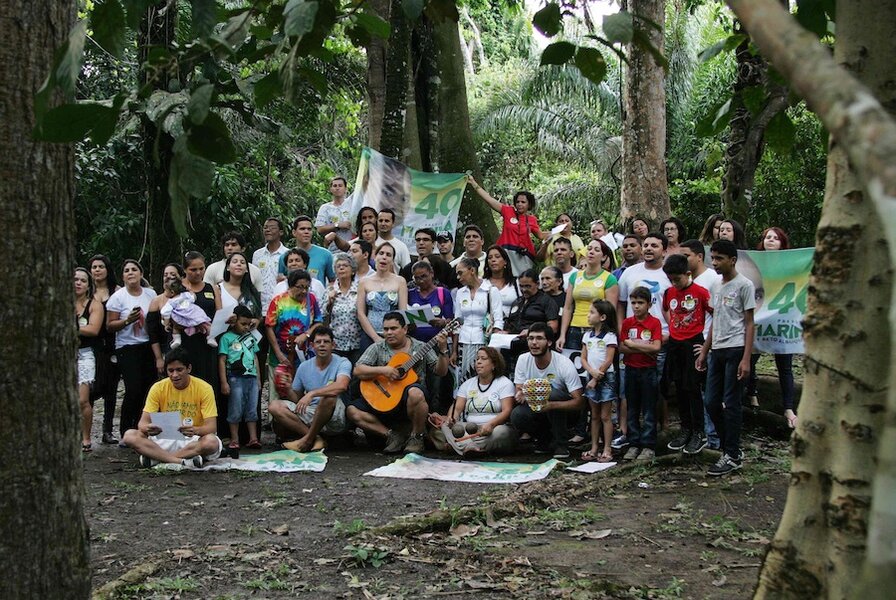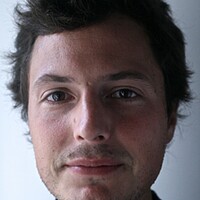On eve of Brazil presidential election, is the Amazon at stake?
Loading...
| Manaus; and Rio Branco, Brazil
Environmentalists rolled their eyes when Brazilian President Dilma Rousseff boasted about her country's environmental success at last week's United Nations climate summit.
Her assertions – that Brazil reduced annual deforestation by 79 percent over the past decade and prevented 650 million tons of carbon pollution annually – were true. But just days ahead of the tight Oct. 5 presidential election, she left out crucial facts: that the measures were the brainchild of her rival, Marina Silva, a former environment minister, and that President Rousseff's administration has dialed back forest preservation laws and opened the Amazon to new farms, dams, and roads.
Most voters are focused on how the two candidates will kick the economy into gear after four years of sluggish growth. But those tactics will have a major impact on environmental protection – a concern not only in the Amazon, which covers more than one-third of Brazil and accounts for more than half the world’s tropical forests, but beyond Brazil’s borders as well.
“Can we develop the Amazon region in a sustainable way that reduces the social and environmental impacts?” asks Celio Bermann of the Institute of Energy and Environment at the University of São Paulo. “This is the challenge of the next president.”
Bridging worlds
Nowhere is that more evident than in Manaus, a congested port and manufacturing hub of 2 million people deep in the Amazon. Spanning the largest tributary of the Amazon River there is a futuristic, two-mile-long bridge that Rousseff inaugurated in 2011 and that marked a first step in connecting Manaus – a four-hour flight from São Paulo – by road to the rest of the country. Next up, in theory, is rebuilding the impassable mud highway that extends out from the bridge to the south.
But political pledges by Rousseff’s Workers’ Party to pursue that construction are sparking anger among environmentalists.
“When you open up a road, the deforestation rate increases,” says Philip Fearnside of the National Institute for Research in the Amazon in Manaus. It makes it easier for outsiders to get to parts of the country that were previously only accessible by small boats or on foot – and to bring in development that is foreign to the region.
Amazon development is heavily influenced by the agriculture and construction sectors, according to Prof. Fearnside. He says those interests helped drive Rousseff to amend Brazil’s Forest Code in 2012 to ease forest restoration rules and grant amnesty for many who had illegally cleared land in the Amazon.
That shift has left its mark: last year deforestation rose by 28 percent, swallowing up an area the size of Delaware and marking the first increase since 2009, according to political scientist Sergio Abranches, who focuses on international environmental issues.
Defending development
Brazil has always defended its sovereign right to develop the Amazon, be it for agricultural use or energy to power the world's seventh-largest economy. But observers say the scale has tipped firmly in favor of development and away from conservation over the past four years.
“Dilma’s positions for a ‘fast development’ have hardened,” says José Goldemberg, a minister of environment and education in the early 1990s.
Rousseff describes Brazil’s bounty of rivers and underground oil as gifts – ones that can bring economic gain and to help pull Brazilians out of poverty. A prominent campaign commercial shows her wearing a hard hat and inaugurating an array of roads, bridges, oil projects, and dams across Brazil, including in the Amazon, while a voiceover says “Dilma is implementing the most infrastructure projects in the world and of our history.”
The president has pushed dozens of dams across the Amazon, with another 61 planned for construction over the next five years. Having come into office pledging to end poverty and provide more support for the poor, she has said the Amazon projects are necessary to fuel Brazil's growing middle class.
But these projects also lead to deforestation and community displacement, critics say. The massive Belo Monte Dam, for example, floods 250 square miles of forest and its construction has displaced 20,000 indigenous villagers.
A total of four protected forest areas have been created during Rousseff’s four-year tenure. But that is a sharp drop from the 270 protected areas created during her predecessor’s eight-year tenure, according to Paulo Adario, the Amazon campaign director for international watchdog Greenpeace.
Silva's home turf
Some of the greatest gains in creating new protected areas can be seen 1,000 miles to the southwest of Manaus, in Silva’s home state of Acre. The massive deforestation that occurred here in the 1980s and 1990s is still visible around the state capital, where scrubby farmland stretches to the horizon in every direction.
Born into a poor family of rubber-tappers, Silva led protests alongside the famed environmental activist Chico Mendes, and later became Brazil’s youngest federal senator. From 2003-2008, she was minister of environment and initiated anti-deforestation programs that created a Greece-sized area of new protected lands. She eventually resigned in protest of new infrastructure proposals for the Amazon under former President Luiz Inácio Lula da Silva.
Acre now has some of Brazil’s most progressive environmental policies, including a carbon-trading plan that essentially pays the state to save trees.
Silva – who has been critical of road construction near Manaus, and the subsequent arrival of farming and logging – says Brazil needs to recognize the ecological value of its forests, not just their economic power. She is expected to provide economic incentives for farmers to stop clearing land, increase forestry oversight, and encourage production of renewable energy sources such as wind, solar, and ethanol. The aim is to reduce reliance on hydro and fossil fuels, which are central to the growth plans developed by Rousseff, a former energy minister.
Silva insists she understands the importance of the farming sector – Brazil is the world’s top exporter of beef, chicken, coffee, and soy – and recognizes its role in providing jobs for 15 percent of the workforce and producing one-fourth of total exports. She’s running with a pro-agribusiness vice-presidential candidate. But, she says, development can be integrated with protecting the environment.
“There are ways of conserving and managing the Amazon more sustainably, ways of combining ranching with forest conservation in a positive way that retains carbon and biodiversity,” says Peter May, a professor of ecological economics at the Federal Reserve Rural University of Rio de Janeiro.








